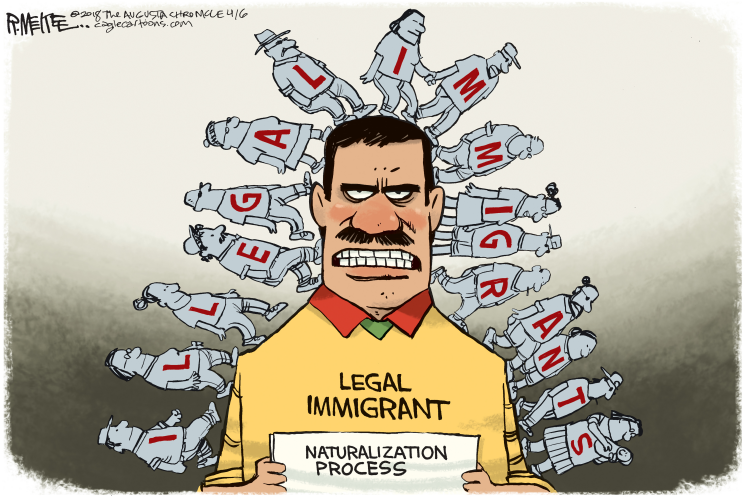Visa Holders Homeward Bound
by Joe Guzzardi
During the upcoming mid-term elections, the 35 Senate races and the 435 House of Representatives campaigns will feature candidates who promise to help create more jobs. Their pledge to improve the labor market for unemployed and underemployed American workers will be at their platforms' core.
Often, however, job addition can come about through job subtraction, namely when immigration policies that are hurtful to American workers are revised to instead help them.
An example: A dateline New Delhi, India story explained that the Trump administration's proposed end to the H-4 visa that gives H-1--visa holders' spouses and children under age 21 employment permission could open up as many as 100,000 jobs for Americans.
A brief, straightforward H-4 visa history lesson is in order. Since Congress enacted the 1990 Immigration Act and created the H-1B, spouses and children under age 21 were specifically denied work authorization. An H-1--who accepted a U.S. assignment knew that his spouse - H-4s are mostly women - would not be able to legally work at any job, low- or high-skilled. After decades of intense but unsuccessful lobbying, however, the Obama White House circumnavigated Congress, and issued one of its several pro-immigration executive actions that gave work permission to certain H-4s. Congress has sole authority over immigration.
The executive order artificially inflated the labor market which fundamentally had no need for job seekers. No oversight agency determined that the skills of H-4s are in demand as is the practice with H-1Bs. And the H-4s, unlike their spouses, have no labor protections, which could make them vulnerable to employers' abuse. Finally, the H-4s' academic and previous employment credentials obtained thousands of miles away from their U.S. homes are difficult to confirm and are often overstated.
Some may have worthwhile skills. Still, the incoming deal they made was that they would not have work permission. And displacing an American, or competing with one for employment, violates the spirit of the deal they accepted.
Interestingly, if reports out of San Francisco are true, then the working H-4 population could decline without federal intervention. When the Harris Poll asked 171 San Francisco-based HR professionals and hiring managers about their global recruiting practices, only 8 percent responded that they proactively seek out foreign nationals, and 54 percent said that sourcing overseas labor is not very important to their current talent acquisition strategy.
Moreover, San Francisco employers said that they're hiring 33 percent fewer foreign nationals while the same trend is in progress nationwide; 26 percent of corporations are less reliant on overseas workers. Assuming the trend continues, fewer H-1Bs means fewer of their H-4 spouses.
While the Bay Area replies may be in part to deflect public criticism, they reflect a concern about tighter immigration practices that could slow foreign labor's flow even though the companies insist they need them. The White House has promised to make it harder for tech firms to hire foreign workers and announced more vigorous onsite enforcement to weed out fraud, even though the companies all still insist they need them.
In the end, the universal truism applies. As the number of foreign workers rises, so does the workers' general population. The more workers, including those from overseas, the less likely wages will rise, or for Americans to be employed.
-
Joe Guzzardi is a Progressives for Immigration Reform analyst who has been writing about immigration for more than 30 years. Contact him at [email protected].